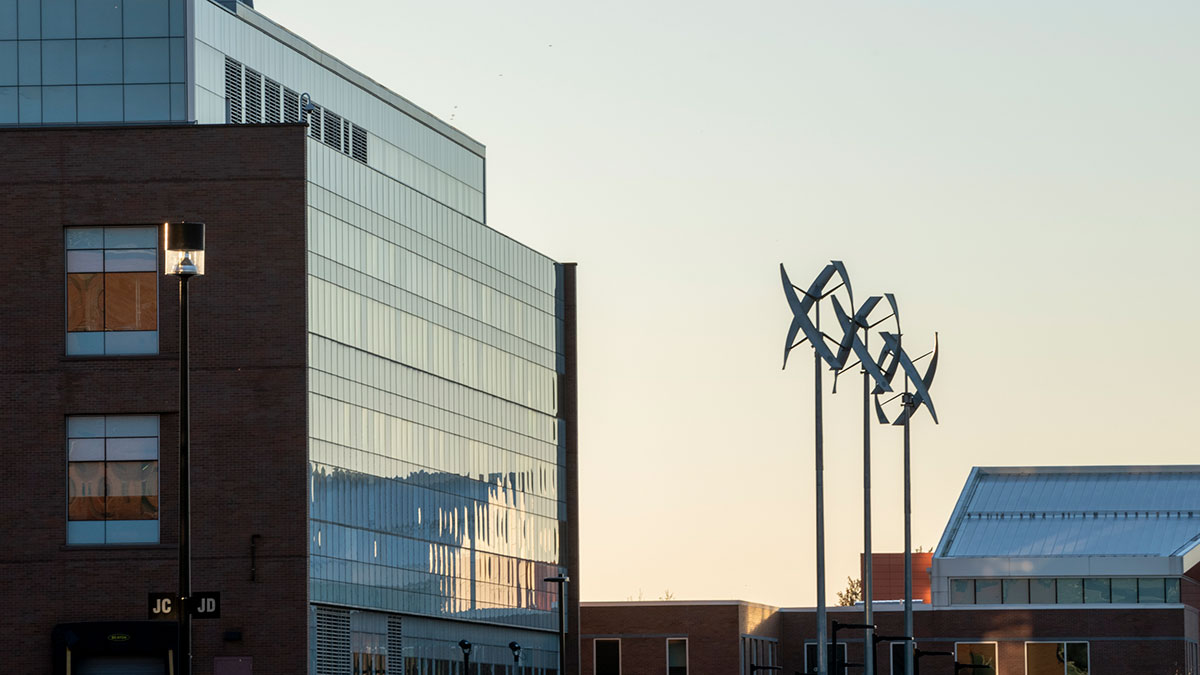Energy
Reducing campus energy consumption and the emissions associated with its generation is a central part of RIT’s sustainability strategy.
The university has made considerable investments in infrastructure improvements, energy conservation, green building, and renewable energy installations. In fact over the last 10 years the RIT campus has grown from 4,637,533 gross square feet (GSF) to 5,385,511 GSF, while total annual main campus energy use has dropped from 713,409 MMBTU’s to 599,792 MMBTU’s. That is a 15.9% reduction in energy consumption and a 16.1% increase in size!
Energy Conservation
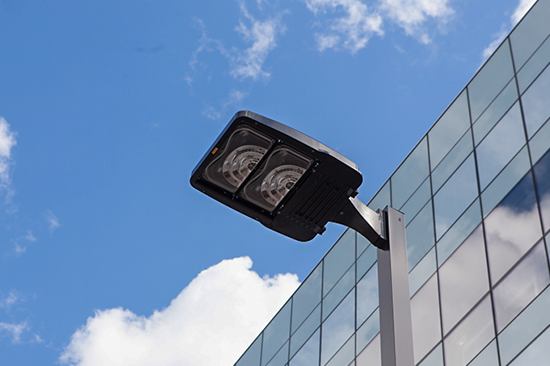
Energy Conservation
A significant portion of RIT’s reduction in energy consumption is a result of numerous Energy Conservation Measures, such as the replacement of hundreds of electric motors with high efficiency motors, fixed volume air flow systems being converted to variable volume systems, and the use of outside air for “free” cooling during colder months as examples.
Renewable Energy
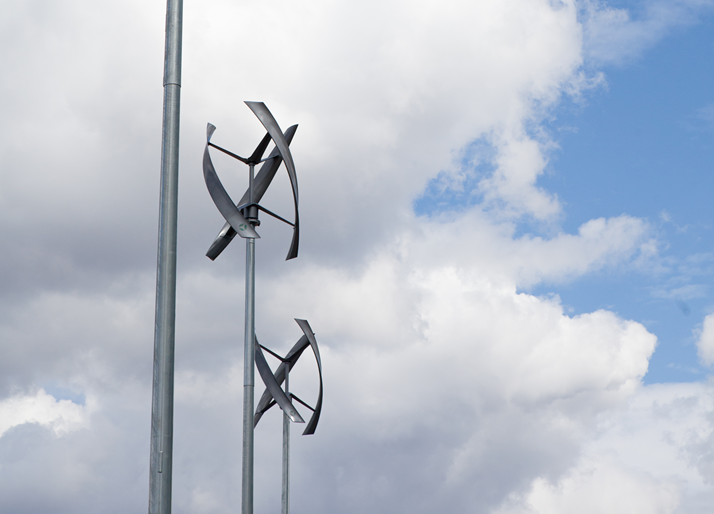
Renewable Energy
100% of the university’s purchased electricity is 'Green-E' certified. While the majority of RIT’s electricity is purchased (not generated on campus), an increasing amount is generated by on-campus solar installations.
Location, Size and Date of Solar Installations
|
Building |
Date Installed |
Capacity (KW) |
|
Engineering Technology Hall |
Sept 2008 |
2.22 |
|
University Services Center |
Sept 2009 |
12.42 |
|
RIT President’s House |
Jan 2013 |
10.34 |
|
Sustainability Institute |
Apr 2013 |
40.8 |
|
Field #1 |
May 2015 |
1994.85 |
|
CIMS/Health Sciences Technology |
Nov 2015 |
16.775 |
|
Field #2 |
Nov 2018 |
2340 |
|
Total |
4417.405 |
Annual Electricity Generation from On-Site Installations
Electricity from Onsite Solar Production
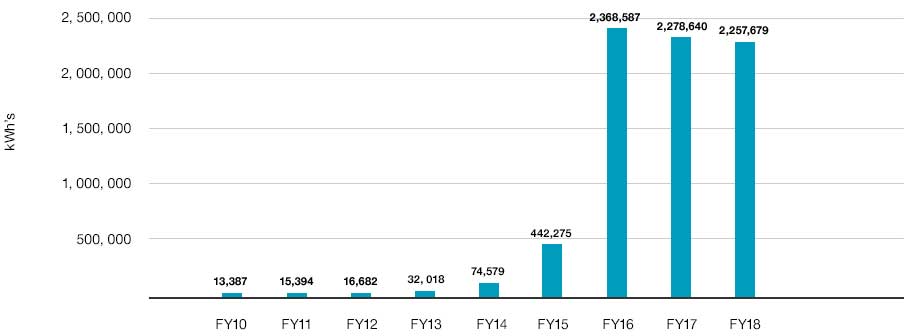
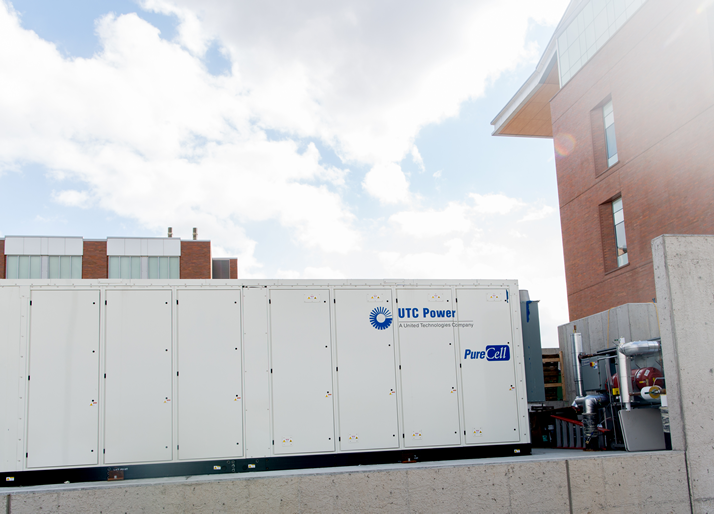
Fuel Cell
A UTC Power Model 400 Purecell System is the primary energy source for Sustainability Institute Hall. The unit, which is roughly the size of a tractor trailer, uses chemical reactions to produce 400 kilowatts of continuous electric power. The building uses less than half of the electricity that is generated. The rest is put onto the campus grid for use by other buildings and processes. Heat is generated as a by-product of the chemical reactions. That heat is tied into the central heating plant for reuse throughout campus. The fuel cell is also a subject of research through the Fuel Cell Test Bed located in the building.
Central Plant
Chilled Water (CHW)
RIT’s air-conditioning needs are provided by three chiller plants that make and distribute CHW on campus. Two plants are on the academic side of campus and one is on the dorm side. The two on the academic side work together supplying CHW in both the summer and winter months, while the dorm CHW is only available during the summer months. All three chiller plants are electrically driven. The CHW is used in the buildings for space cooling, process cooling and maintaining environmental conditions in spaces with specific needs, such as clean rooms and data centers.
Central Plant Medium Temp Hot Water (MTHW)
RIT also has two boiler plants that make and distribute MTHW on campus. There is one plant on the academic side and one plant on the dorm side of campus. All of the boilers in the plants are fueled by natural gas.
Both the CHW and MTHW are distributed to the buildings through pipes that are underground or in the tunnels and are metered at both the plant for production and the buildings for consumption. Inside each of the buildings are heat exchangers to reduce the temperature for different loads (Domestic Hot Water, building reheats, air handler units, snowmelt, perimeter heat, etc).
What You Can Do
RIT is continually working to improve the efficiency of our buildings and energy systems. However, individual choices and behaviors have a significant impact on the amount of energy, electricity in particular, that RIT consumes. Here are some easy ways for you to help:
-
Opt for daylighting whenever possible and turn lights off when they are not needed.
-
Use task lighting in offices and dorm rooms rather than overhead lights.
-
Turn off computers, monitors, printers, entertainment equipment, and appliances when not in use, and remind others to do the same.
-
Unplug chargers and other electronics when not in use.
-
Disable screen savers—they waste electricity and are no longer necessary for “saving” your computer screen—and enable power management settings on your devices.
-
Purchase only “Energy-Star” devices such as computers, printers, copiers, and other appliances.
-
Ensure that windows and exterior doors remain closed during the heating and cooling seasons.
-
Report leaky faucets, “continuous flush” toilets, temperature issues or other maintenance concerns to Facilities Management Services.



